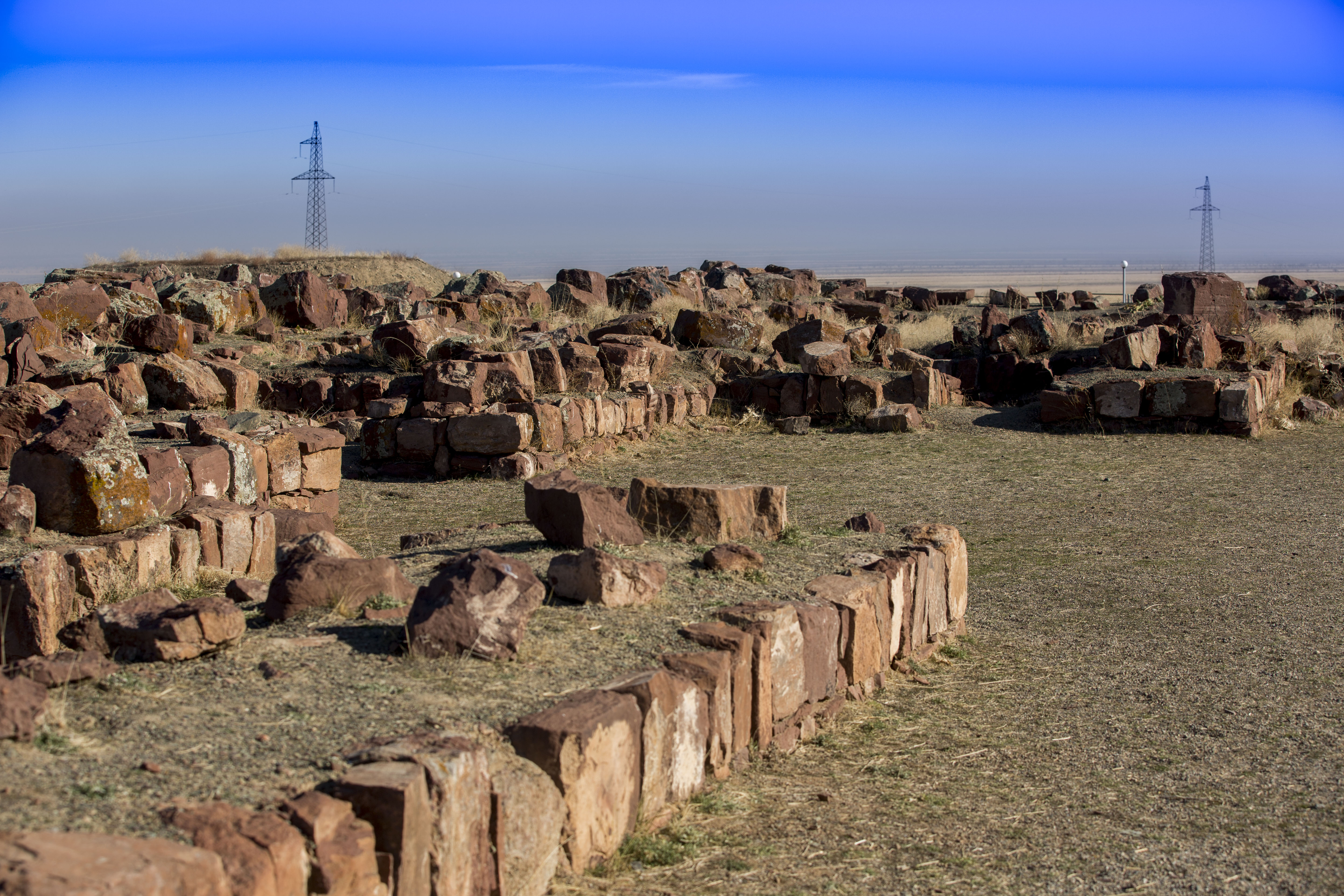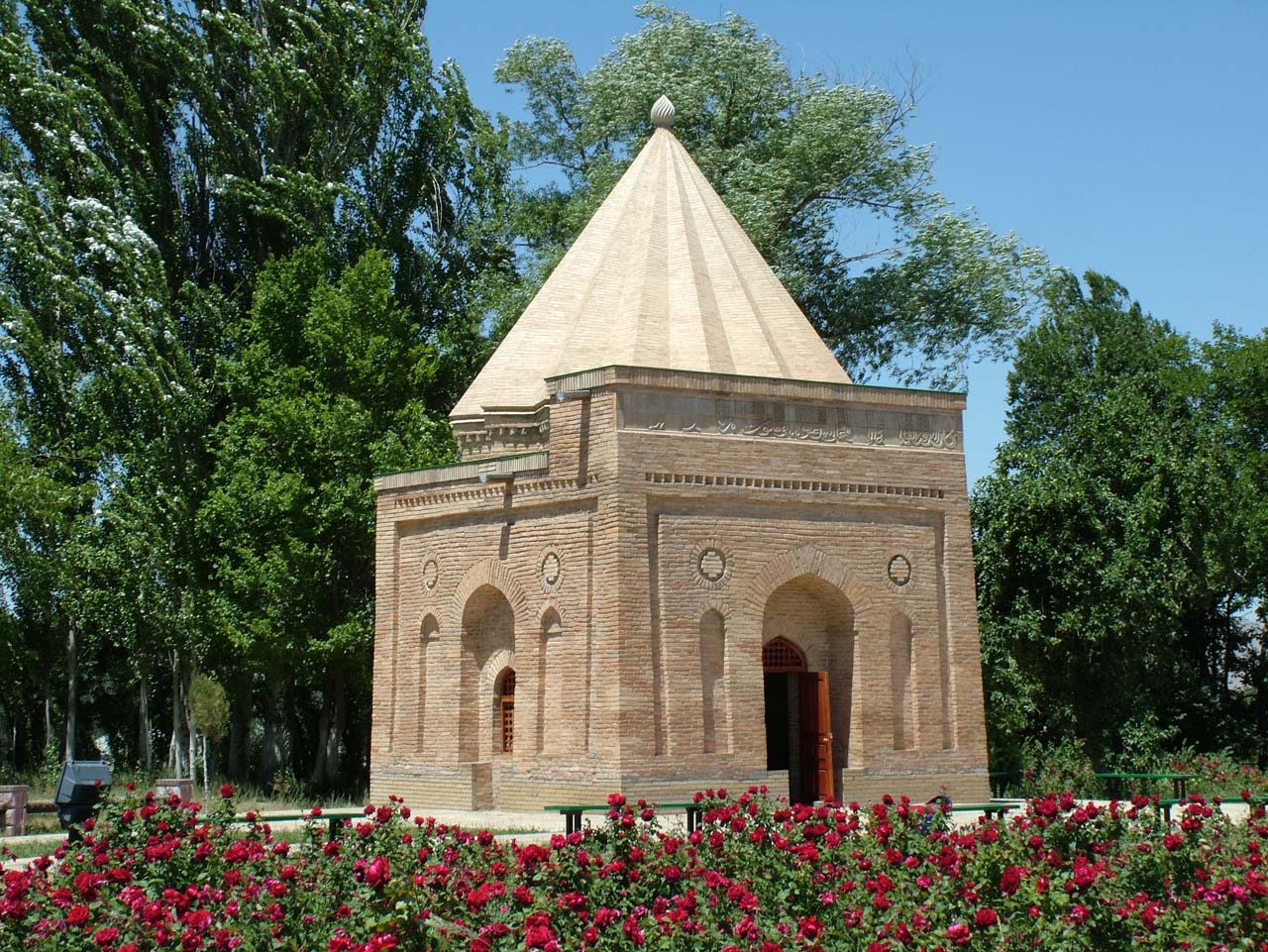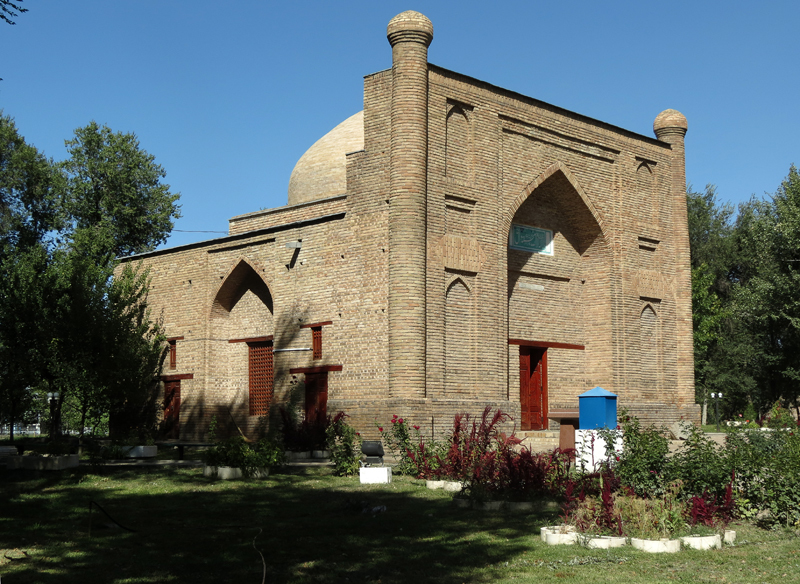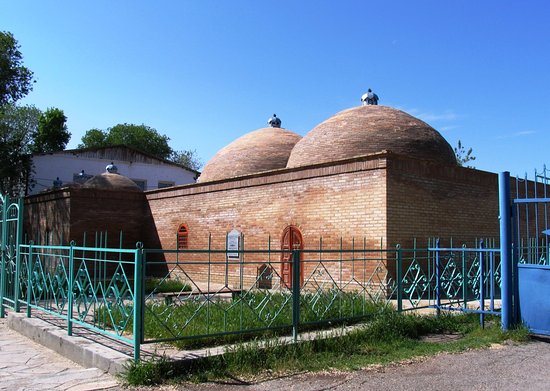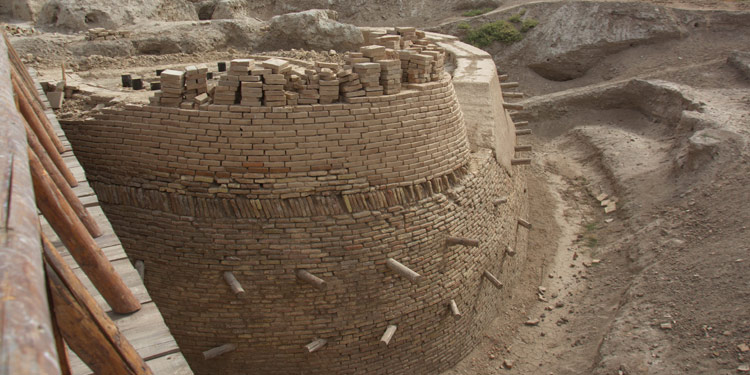Silk Road Adventures
Duration:
5 days/ 4 nights
Season:
All year around
For centuries Silk Road caravans have crossed the steppes of Kazakhstan. The main line of their route lay across the ancient cities Sayram, Turkestan, Otrar, Taraz and go further to Central Asia. During this tour you will visit these cities and see the beauty of Kazakhstan’s nature – Aksu-Zhabagly nature reserve.
Any questions?
Day 1: Almaty, city tour.
Meeting with guide in Almaty and transfer for city tour.
City tour starts from visit of Park of 28 Panfilov Guardsmen, named after the 28 Panfilov guards from Almaty, who died heroically defending Moscow against the Nazi invasion in 1941. The next stop is the world’s most elevated wooden church, Zenkov Cathedral, Green bazar and the Central mosque. Then we will pass through the modern highlights of the city: futuristic and busy Al-Farabi street, the Presidential palace, Monument of Independence.
Transfer to Medeo gorge, where you will have a brief stop on the huge Medeo dam, which protects the city from destructive mudflows formed on the tops of the western Tien Shan.
Getting to Shymbulak from Medeo by cable car.
The Ski Resort Shymbulak is located on a picturesque valley in the Zailiyskiy Alatau within the height 2260 m above sea level, 25 km from the centre of Almaty.
Transfer to visit Kok-Tobe mountain (the highest point of the city, located at height of 1100 meters above sea level). From its top opens the surprising panorama on mountains and the city. The highest TV-tower is located here.
18.00 Transfer for dinner at local restaurant.
19.30 Transfer to the train station. 20:18 night train to Taraz
Meal: ---
Day 2: Taraz
05:50 Arrival to Taraz. Taraz has played an enormous role as a cultural and trade centre of Kazakh Khanates and the Great Silk Road.
06.30 Breakfast on the way
07.30 Transfer to Akyrtobe (65 km, 1 hour)
Akyrtobe (or Akyrtas) - ruins of ancient huge stone settlement. Probably, this place was really esteemed on ancient time as sacred. The archaeological complex "Akyrtas" is an open-air museum located at the foot of the Kyrgyz Alatau, 45 kilometers from the city of Taraz. Akyrtas is one of the most mysterious and interesting constructions of the ancient culture of nomads in the whole territory of Kazakhstan. It dates from the 8th-9th centuries.
Until now, it is unknown what was his purpose, and who and when built it. Akyrtas has always been a legend, and already in the Middle Ages people were lost in conjecture about these majestic ruins. A certain mystery was always inherent in this place. It remains a legend until now. The first researchers of Akyrtas came out with assumptions that it was a Buddhist temple or Nestorian church. Modern researchers consider that their predecessors were near from true.
13.00 Lunch
After lunch, start Taraz city tour. It will include visiting of following sightseeing:
- Regional Museum with impressive collection of balbals (stone sculptures);
- Karakhan and Dautbek Mausoleum;
- medieval bath of Cali Yunus. Exhibits of the museum of the cities of Silk Road are located here.
- The structure Tekturmas which is located at the top of a hill, near Talas river.
After city tour, you will be transferred to Tyulkubas, village near Aksu Zhabagly Nature Reserve.
En route visiting of Aisha Bibi and Babadzhi Hatun Mausoleums.
The Aisha Bibi mausoleum is considered as a pearl of medieval architecture by historians, architects, archaeologists, as well as representatives of UNESCO, who made this mausoleum a list of particularly valuable historical and architectural monuments of mankind. This is the only architectural monument in all of Central Asia, lined with carved terracotta. The building of the mausoleum Aisha Bibi is distinguished by the grandeur of decoration with terracotta tiles of various shapes and unrepeatable ornament. Tiles were performed by skilled craftsmen and counted up to 99 patterned compositions. At the heart of the ornaments are used vegetative and geometric motifs, in which hidden the deep philosophy of the sad legend accompanying the history of the mausoleum's appearance, which the local caretakers like to tell to the visitors here.
Located near the mausoleum of Aisha Bibi, the mausoleum of Babadzhi Khatun is a unique architectural monument of the 11th-12th centuries. The mausoleum is famous for its original 16-ribbed umbrella dome of double curvature. The umbrella ribbed covering of the dome does not have, in fact, direct analogues in contemporary Central Asian architecture. The epigraphic frieze on the portal of the mausoleum brought to us the name of the woman buried under it. According to legend, she was Aisha's nanny and accompanied her on a tragic trip. After the death of Aisha Babadzhi Khatun supported the fire on the grave of her beloved pupil. Both mausoleums are not only architectural objects, but also places of pilgrimage, as they are considered holy places in the Muslim world.
20.00 arrival to Tulkubas. Accommodation in the guest house. Dinner, overnight.
Meal: lunch, dinner
Day 3: Tulkubas – Aksu Zhabagly National Reserve
08.00 Breakfast.
09.00 Drive to Aksu Zhabagly Nature Reserve – 18 km (20-25 min). It is the oldest and most famous nature reserve in Central Asia. It is located on the ridges of the Talas Alatau and Ugam Maydantal, in the western part of the Tien Shan mountains. The name of the reserve is formed from the names of its two biggest rivers - Aksu and Zhabagly. Aksu-Zhabagly is included in the list of the World Network of Biosphere Reserves of UNESCO.
Trekking (or this excursion can be on horse-back) in Kishi-Kaindy tract (picnic during the excursion). Kishy Kaindy tract is interesting and easy to reach. The length of the route is about 7 km. Excursion road meanders on the slope along Zhabagly river and gives a look at the beautiful panorama of spacious river valley. Lunchbox during excursion.
Return to the guesthouse. Shower-bath. Dinner. Overnight in guest house.
Meal: breakfast, lunch, dinner
Day 4. Aksu Zhabagly National Park
08.00 Breakfast.
09.00 Car-foot excursion to Aksu river canyon (picnic during the excursion). Canyon Aksu always leaves a vivid impression. It is the deepest canyon in Eurasia, its depth from 300 to 500 meters, the distance between the edges - about 1 km. Canyon is beautiful at any time of the year.
Packed lunch during excursion.
Return to the guest house. Shower-bath. Dinner in guest house and drive to Shymkent (90 km, 2 hours)
Accommodation in hotel. Overnight
Meal: breakfast, lunch, dinner
Day 5: Shymkent - Turkestan - Shymkent
08.00 Breakfast
09.00 Short city tour around Shymkent.
City tour starts from visiting local bazar (small bazar) and historical museum.
Historical museum of Shymkent contains relics that are of direct relevance to the history of the region. The stored things embodied not only to the history, life and culture of the ancient cities of the Great Silk Road, such as Otrar, Sairam, Turkestan, and others, but the totality of traditions, customs, arts, crafts, civilizations and special features of the spiritual identity of the Kazakhs.
11.00 Drive to Turkestan (170 km, about 2 hours)
On the way visit Arystan Bab mausoleum, ruins of Otrar city.
According to legends Arystan Bab, a religious mystic, was the recipient of Mohammad's amanat beads or persimmon stone. Khodja Ahmed Yassaui was his pupil. Arystan Bab lived for over 400 years before his death
The ancient settlement at Otrar was first excavated in 1969. There were found brick structures, including a palace, mosques, a bath-house and ovens. First mention of Otrar or Farab (the latter name etymologically Arabic) occurs at the beginning of the ninth century. One of the residents of Otrar at that time was the philosopher Abu Nasr al Farabi. A man of encyclopaedic breadth of interest - he was a philosopher, poet, composer, linguist, mathematician, doctor, agronomist and botanist - he was referred by his students as ’the second teacher’ - meaning second only to Aristotle. There is a story about the heroic but ultimately unsuccessful defence of Otrar against Genghis Khan’s forces. Before the attack on the town, a caravan sent there by Genghis Khan in 1218 to the court of the khorezm-shah Mohammed had been plundered and then annihilated on arrival, apparently because the governor, Kair Khan Yinalchuk, suspected that among the people travelling with the caravan were too many spies and not enough traders. This well-known incident has come to be known as the Otrar catastrophe; it was the pretext by which the Mongols began their conquest of Central Asia.
Arrive to Turkestan.
Trip to Sauran.
Sauran city was functioning in XIII – XVIII centuries, and it was one of the most powerful Turkestan castles. In the middle of XIII century the city was the capital of Ak Orda. It is located 40 km in the North –West of Turkestan.
Walk to the historical monuments of the old Sauran.
En route back to Shymkent visit the mausoleum of Hodja Ahmed Yassavi.
The Mausoleum of Hodja Ahmed Yassavi is an unfinished mausoleum in the city of Turkestan, in southern Kazakhstan. The structure was commissioned in 1389 by Timur, who ruled the area as part of the expansive Timurid Empire, to replace a smaller 12th-century mausoleum of the famous Turkic poet and Sufi mystic, Khoja Ahmed Yassavi (1093–1166). However, construction was halted with the death of Timur in 1405.
The religious structure continues to draw pilgrims from across Central Asia and has come to epitomize the Kazakh national identity. It has been protected as a national monument, while UNESCO recognized it as the country's first site of patrimony, declaring it a World Heritage Site in 2003.
Drive back to Shymkent.
Transfer to airport for flight to Almaty at 21:50.
23:05 arrival to Almaty. Transfer to hotel. The end of tour.
Meal: lunch

